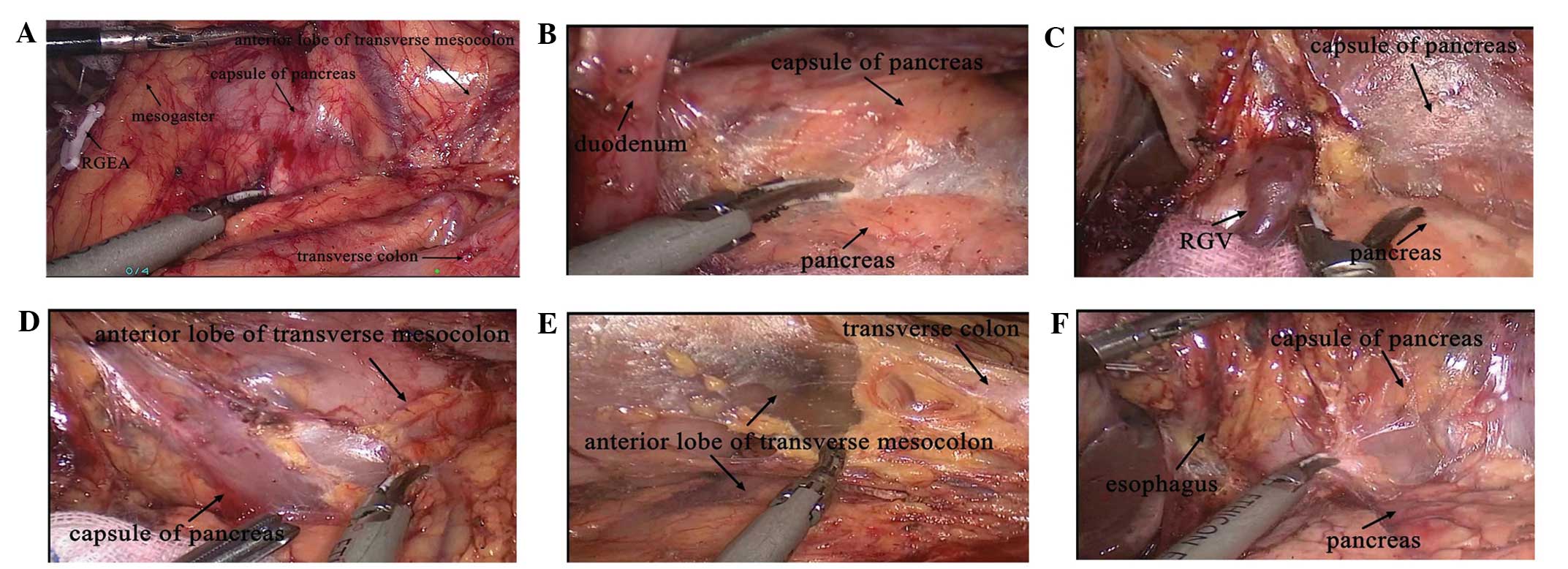Surgical skills for laparoscopic resection of the bursa omentalis and lymph node scavenging with radical gastrectomy
- Authors:
- Published online on: May 19, 2015 https://doi.org/10.3892/ol.2015.3226
- Pages: 99-102
-
Copyright: © Zou et al. This is an open access article distributed under the terms of Creative Commons Attribution License.
Metrics: Total
Views: 0 (Spandidos Publications: | PMC Statistics: )
Total PDF Downloads: 0 (Spandidos Publications: | PMC Statistics: )
Abstract
The aim of the present study was to inquire into the feasibility, surgical skills required and short-term effect of a laparoscopic resection of the bursa omentalis and lymph node scavenging with radical gastrectomy. In this study, the clinical data of 18 patients who received a laparoscopic resection of the bursa omentalis with radical gastrectomy in the Department of Gastrointestinal Surgery, Guangdong Province Hospital of Traditional Chinese Medicine (Guangzhou, Guangdong, China) during the period between January 2012 and January 2014. A retrospective analysis was performed and the surgical duration, bursa omentalis resection time, amount of bleeding during the surgery, post‑operative complications associated with the surgery, length of hospital stay, number of lymph nodes scavenged and short‑term follow‑up results were assessed. The results indicated that all of these 18 patients successfully received a resection of the bursa omentalis and no one required conversion to open surgery. The mean surgical duration was 289.3±30.3 min, the bursa omentalis resection time was 46.1±18.6 min and the amount of bleeding was recorded as 35.5±6.5 ml in these patients. No patients suffered from post‑operative complications, such as pancreatic fistulae, anastomotic fistulae, intestinal obstructions or succumbing to the surgery, and no patients succumbed within a 6‑month follow‑up period. In conclusion, for advanced gastric carcinoma, laparoscopic resection of the bursa omentalis and lymph node scavenging with radical gastrectomy is feasible. In addition to meeting the requirement that the operator should be skilled and experienced in open bursa omentalis resection, and have well‑knit basic skills in using a laparoscope, attention must also be paid to the construction of the surgical team.










